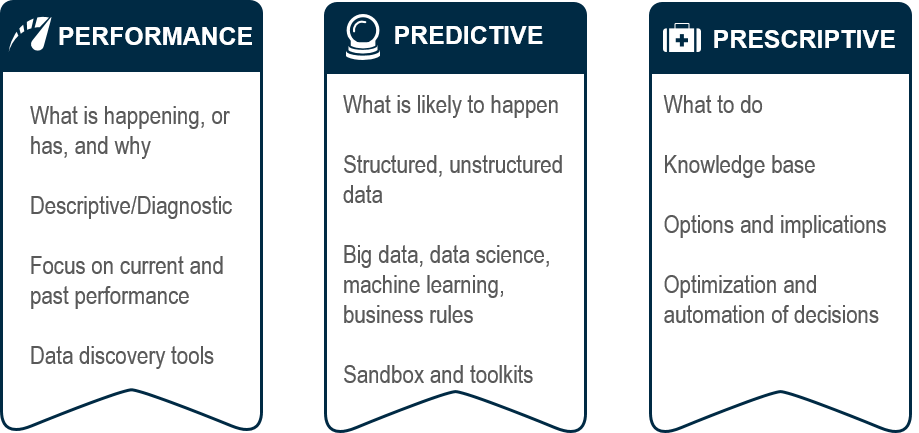

Industrial companies have been using a form of prescriptive analytics for quite some time, particularly for maintenance and field service. Though rarely ever explicitly referred to as “prescriptive,” historic performance analytics—descriptive and diagnostic—are just that when they are underpinned with a knowledge base (and often automation) that enables a company to apply rear-view mirror prescriptive methods to problem solving. Unfortunately, these analytics are still reactive.
However, a new layer of the analytics onion is being peeled—prescriptive analytics built upon predictive methods. While predictive analytics determine the probability that something will happen, prescriptive analytics add to them by answering the question of what should be done.
Yet, the lines are often blurred when distinguishing predictive from prescriptive analytics. Most often, it occurs when a predictive analytics solution is described as closed-loop. In many instance, the closed-loop process is described as prescriptive analytics. That is not necessarily accurate.

Predictive analytics can lessen the gap between insight and action, so they may seem close looped. In these cases, the solutions provide insight that failure must be remedied and can alert people and machines to act. At this point, the solution has yet to determine the ideal remedy. Often, human intervention will occur and the problem will be fixed - changing an asset’s duty cycle, maintenance, replacement, etc. In some instances of machine learning, retraining of models is automated so that other machines are now capable of identifying a new anomaly.
On the other hand, prescriptive analytics are by their very nature closed-loop. Like predictive analytics, they can ingest data and identify patterns. However, they also consider options, determine the ideal action to take, and can invoke that action. Thus, prescriptive analytics remove the barrier between the insight gained and the action taken. To do so, prescriptive analytics require decision support in the form of a both knowledge base and some level of automation.
When predictive analytics are misidentified as prescriptive, it usually occurs because of two capabilities that are characterized as proactively solving a problem:
| Predictive Capability | Action |
| Enables transfer of learning to similar assets | Prediction + retraining: Is a retraining of models to ensure recognition of anomalies by other machines |
| Sends alerts, emails, or work order prompts | Prediction + push: Delivers a prompt to people and/or systems that an anomaly has been identified. |
Currently, prescriptive analytics are typically applied when the desired outcome of the analyzed process is very clear. An example is the timely and accurate delivery of a package to a pre-defined address.
At our 21st Annual ARC Industry Forum in Orlando in February of 2017, we will host multiple sessions that will dig more deeply into advanced analytics, including a session on analytics best practices I will lead on Wednesday, February 8. I will also co-present a Monday workshop on how to determine requirements for an advanced analytics request for proposal (RFP) process. For information on any of the sessions, please contact your client manager or shoot me an email.

